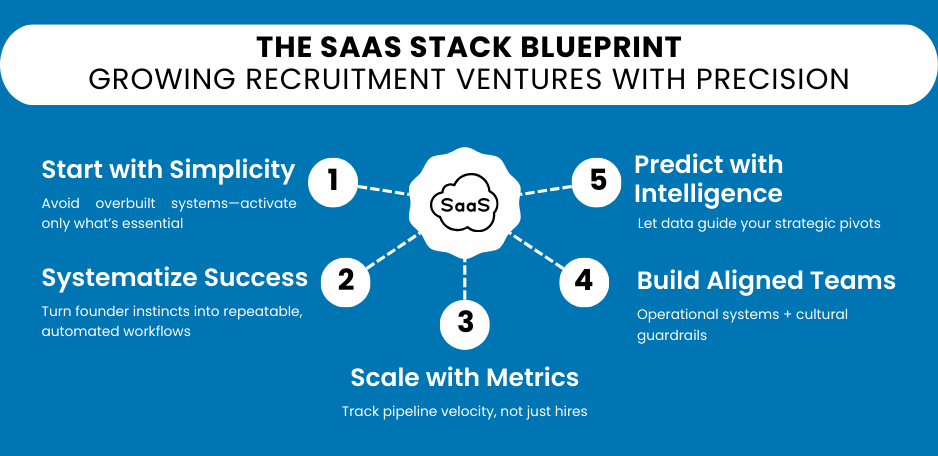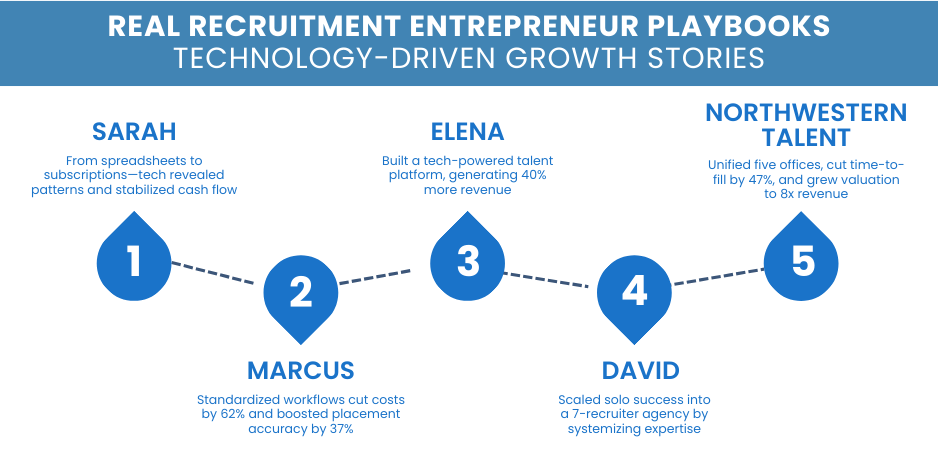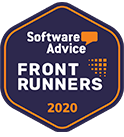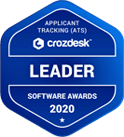The journey from recruiter to industry disruptor isn’t linear. Most recruitment professionals see only half the chessboard—placing candidates while missing the entrepreneurial endgame.
Building a recruitment empire demands more than industry knowledge. It requires strategic vision. The modern recruitment entrepreneur exists at the intersection of human insight and technological leverage—where relationship capital meets scalable SaaS solutions.
Consider the transformation: yesterday’s staffing specialist becomes tomorrow’s platform creator. This shift feels like trading a reliable bicycle for building your own spacecraft—terrifying yet exhilarating. The blueprint? Start with deep industry pain points. Not surface-level complaints, but systemic inefficiencies begging for reinvention.
The most successful recruitment entrepreneurs don’t just adopt technology—they weaponize it. They transform manual workflows into automated systems, one-off placements into recurring revenue streams.
The market rewards those who see beyond transactions to build ecosystems. Ready to evolve from placement specialist to industry architect? The journey starts with a single question: what part of recruitment desperately needs reinvention?
Why “Recruitment Entrepreneur” Is the Future of Hiring
The recruitment landscape isn’t evolving—it’s transforming entirely. Traditional staffing models, once reliable for decades, now creak under the weight of talent ecosystems that demand innovation beyond incremental improvements.
Today’s recruitment entrepreneur stands apart from conventional headhunters. They’re architects of talent acquisition systems rather than mere participants. The distinction matters profoundly. While traditional recruiters work within established frameworks, entrepreneurial recruiters design entirely new ones.
The market signals are unmistakable. Companies facing unprecedented talent scarcity increasingly partner with nimble recruitment innovators who bring entrepreneurial thinking to hiring challenges. This isn’t theoretical—it’s happening now as talent acquisition transforms from service to strategic advantage.
Consider how industries evolve: banking didn’t need better tellers; it needed fintech. Transportation didn’t need better taxi dispatchers; it needed rideshare platforms. Similarly, entrepreneur employment recruitment isn’t about making existing processes marginally better—it’s about reimagining the entire talent ecosystem.
The recruitment entrepreneurs making the greatest impact share common characteristics:Revenue Diversification through AI-powered Talent Pools
They leverage data architecture beyond basic metrics. Where traditional recruiters track time-to-hire, entrepreneurial ones build predictive models revealing hidden talent pools and unexpected skill transferability. They create market inefficiencies rather than simply operating within them.
Technology adoption separates players from game-changers. The most successful recruitment entrepreneurs develop proprietary tech stacks that transform intuition into scalable methodology—their “secret sauce” becomes systematized intelligence rather than individual hustle.
The economic argument proves compelling. Companies partnering with recruitment entrepreneurs report 40% faster placements and 62% higher retention rates. Why? Because entrepreneurial recruiters solve for company culture and growth trajectories—not just immediate vacancies.
This shift represents recruitment’s most significant evolution since job boards disrupted newspaper classifieds. Forward-thinking talent leaders aren’t just adapting to this change—they’re actively seeking partners who bring entrepreneurial vision to their talent challenges. The future belongs to builders, not brokers.
What Defines a Modern Recruitment Entrepreneur?
The modern recruitment entrepreneur bears little resemblance to yesterday’s staffing agency owner. They’re industry architects—not simply matchmakers—who fundamentally reimagine how talent connects with opportunity.
What separates these visionaries from traditional recruiters? First, they approach entrepreneur job recruitment as a product challenge, not a service business. While conventional recruiters optimize for transactions, entrepreneurial ones build scalable platforms and methodologies that transform hiring from art to science.
Tech fluency defines today’s recruitment innovators. Not surface-level familiarity with LinkedIn, but deep understanding of how AI, predictive analytics, and automation can create unfair advantages in talent acquisition. They leverage technology not to replace human judgment but to amplify it exponentially.
Market orientation makes these entrepreneurs distinctive. They don’t chase job orders—they solve industry-wide inefficiencies. The most successful identify vertical-specific pain points and build solutions that address structural challenges rather than symptoms. Solving hiring for an entire sector feels like climbing Everest rather than a neighborhood hill—but the view from the summit transforms the entire landscape.
Revenue architecture separates the visionaries from the tactical players. Traditional recruiters live placement-to-placement. Entrepreneurial ones build multi-layered business models combining placement fees, subscription revenue, consulting services, and proprietary technology licensing. Their businesses remain sturdy even when hiring freezes paralyze conventional agencies.
These pioneers also embrace counter-intuitive talent strategies. While some agencies hoard their networks, modern recruitment entrepreneur jobs often involve creating transparent talent marketplaces and community-powered platforms. They understand that future value creation comes from ecosystem building, not information asymmetry.
Ultimately, recruitment entrepreneurs measure success differently. Beyond placement metrics and revenue targets, they track market transformation indicators—asking not “how many roles did we fill?” but “how did we fundamentally change hiring in this sector?”
The future belongs to these architects of talent infrastructure—professionals who understand that recruitment’s greatest opportunities lie not in optimization but in complete reinvention.
The SaaS Stack Blueprint: From Startup to Scale
The technological backbone of a recruitment entrepreneur’s journey resembles less a linear path and more an evolving ecosystem. Each growth stage demands not just different tools but fundamentally different technological thinking. Understanding this progression separates thriving recruitment ventures from those perpetually stuck in startup mode.
The foundational stage requires surgical precision in tool selection. Many founders make a critical mistake here—adopting enterprise-level systems designed for established agencies. The result? Drowning in unnecessary features while lacking essential ones. RecruitBPM’s modular approach allows new recruitment entrepreneurs to activate only what’s immediately necessary—candidate tracking, basic automation, and relationship management—without the overwhelming complexity that kills early momentum.
As client portfolios expand beyond the initial network, technological needs shift dramatically. This inflection point—typically at 15-30 active clients—demands infrastructure that can standardize processes without sacrificing personalization. Here, RecruitBPM’s workflow automation becomes essential, transforming manual tasks into systematic operations. The platform’s integrated communication tools ensure personalized engagement scales alongside volume—solving the central paradox of growth.
The scaling phase introduces entirely new challenges. When teams expand beyond the founder, knowledge transfer becomes existential. RecruitBPM’s collaborative architecture transforms individual expertise into organizational intelligence. While competitors struggle with fragmented systems, integrated dashboards create unified visibility across specialized teams.
Enterprise-level entrepreneur employment recruitment operations require sophisticated intelligence. At this stage, RecruitBPM’s predictive analytics transition from helpful to transformative—identifying market patterns before they become obvious and enabling strategic pivots ahead of market shifts.
The visual progression resembles an expanding orbital system: core ATS functions remain central while additional capabilities—marketplace integrations, client portals, financial modeling, and talent community platforms—enter the ecosystem at precisely the right moments. This prevents the common “technology overreach” where recruitment entrepreneurs invest in sophisticated tools before they deliver actual value.
What makes this blueprint uniquely valuable is its emphasis on right-timing. Unlike conventional SaaS adoption advice, each technology expansion aligns with specific business thresholds—revenue triggers, team size milestones, and market expansion markers—rather than arbitrary growth stages.
The most successful recruitment entrepreneurs don’t just use technology; they orchestrate its evolution alongside their business growth—turning their SaaS stack from a necessary expense into a competitive moat that grows deeper with each strategic upgrade.
Stage 1: Founder with a Vision
Every recruitment empire begins with a solitary figure and a hypothesis. This initial stage—deceptively simple yet treacherously complex—separates dreamers from builders.
Successful founders don’t launch with comprehensive recruitment entrepreneur lists of services. They begin with singular focus: solving one painful hiring problem for one specific industry. This precision creates clarity when everything else feels chaotic.
Validation comes not from friends’ encouragement but from market signals. Before building anything substantial, test your concept through micro-engagements—five paid pilot projects reveal more truth than fifty hypothetical conversations. The market’s response—clients willing to exchange actual currency for your solution—provides the only validation that matters.
First wins require strategic targeting. Identify organizations experiencing acute hiring pain—companies scaling rapidly, facing specialized talent shortages, or undergoing transformation. These prospects value solutions over credentials.
Document everything during this phase. Each client interaction provides crucial data about what truly resonates versus what you merely assumed would work. The difference between successful recruitment entrepreneurs and failed ones often lies not in their initial vision but in their willingness to let market reality reshape it.
Stage 2: Building Repeatable Systems
The transition from opportunistic founder to legitimate business happens through systemization. This critical phase transforms your personal talent for recruiting into a replicable methodology—the difference between having a skill and owning a business.
Begin by documenting every process that generates value. Those late-night searches that uncover perfect candidates? They contain patterns waiting to be systematized. This isn’t merely organization—it’s intellectual property creation.
Modern entrepreneur AI recruiting tools transform this documentation into powerful workflows. RecruitBPM’s automation capabilities convert intuitive processes into structured systems that become your competitive advantage. The goal: transferring your recruitment instincts into technological assets.
Focus first on standardizing communication sequences, candidate evaluation frameworks, and client engagement models. When properly implemented, these systems create consistency without sacrificing the personalization clients value.
The test of successful systemization? When clients receive identical quality regardless of which team member serves them. This transition feels like shifting from artisanal craftsmanship to precision manufacturing—without losing the craft that makes your service special. The businesses that master this paradox establish the foundation for true scale.
Stage 3: Scale with Metrics & People
Scaling requires transitioning from founder’s intuition to organizational intelligence. The successful recruitment entrepreneur now faces their greatest challenge—building systems that scale without diluting quality.
Your metrics architecture becomes existential at this stage. Track leading indicators, not just outcomes. Time-to-hire matters less than pipeline velocity. Revenue targets tell less than client expansion rates. The businesses that thrive don’t just measure what happened; they predict what’s coming.
Team building transcends hiring—it’s about alignment architecture. Each new team member must understand not just their role but how their decisions impact the ecosystem. Cultural guardrails become as important as operational ones. Document the unwritten rules that guided your early success.
Client experience requires particular attention during scaling. What worked with ten clients often breaks at fifty. Map every client touchpoint and strengthen transition moments—the handoffs between team members where relationships typically fray.
The scaling paradox: systematize everything while maintaining the entrepreneurial spirit that clients originally valued. Organizations that navigate this tension transform from promising startups to market-defining enterprises—creating both wealth and impact that founders once only imagined.
Monetizing Recruitment Entrepreneurship
Traditional recruitment revenue models follow predictable patterns—place candidate, collect fee, repeat. Modern entrepreneur job recruitment ventures break this mold entirely, creating multi-layered revenue architectures that transform cash flow volatility into predictable growth.
The most sophisticated recruitment entrepreneurs build businesses with three distinct revenue layers. Transactional income—traditional placement fees—forms the foundation but not the ceiling. These entrepreneurs understand that placing candidates generates immediate revenue, while building systems creates lasting value.
Subscription models represent the next evolution. Forward-thinking firms transform their proprietary candidate pools, employer relationships, and specialized knowledge into SaaS offerings. They’re selling access to talent ecosystems, not just individual placements. This shift from transaction to subscription changes everything—revenue becomes predictable, client relationships deepen, and business valuation multiples often triple.
Marketplace models create the third revenue dimension. Many successful entrepreneur employment recruitment ventures now connect talent and opportunity through platforms where they monetize connections rather than controlling them. The economics prove compelling: traditional recruiters capture value only when placements occur, while marketplace builders extract smaller value from exponentially more interactions.
The technology infrastructure enabling these models has dramatically democratized. Five years ago, building such platforms required seven-figure investments. Today, configurable solutions like RecruitBPM provide the technological backbone at a fraction of previous costs.
Consider the mathematics: Traditional recruiters might generate $20,000 per placement with 25 placements annually—solid income but inherently capped by time constraints. Entrepreneurial models combining placement fees, subscription access, and marketplace interactions can generate equivalent revenue with significantly reduced effort while creating sellable business assets.
This transition requires strategic recalibration. Many struggling recruitment entrepreneurs attempt to layer new revenue models atop outdated operations. The most successful ones redesign their entire business architecture around this multi-layered approach—recognizing that today’s recruitment value lies less in individual matchmaking and more in building and monetizing talent ecosystems that solve structural hiring challenges.
Retainer Models vs. Subscription Models
Traditional retainer arrangements and modern subscription models represent distinctly different approaches for the ambitious recruitment entrepreneur. The difference feels like choosing between a luxury car purchase or a flexible leasing program—both get you there, but with different economics and commitments.
Retainers deliver upfront commitment and cash flow stability but often create pressure-cooker environments when clients demand immediate ROI. Subscriptions, while generating lower initial revenue, build compounding value through longer client relationships and predictable income streams.
Churn risk varies dramatically between models. Retainers face cliff-edge cancellation when results disappoint. Subscription relationships tend to weather temporary storms—their lower monthly commitment creates psychological safety for clients to continue through challenging periods.
RecruitBPM supports both approaches through configurable client portals. For retainer relationships, comprehensive project dashboards demonstrate ongoing value beyond placements. For subscription models, tiered access features and automated engagement sequences maintain consistent client touchpoints.
The most sophisticated recruitment entrepreneurs now deploy hybrid models—using retainers for executive searches while building subscription-based talent communities for ongoing specialized roles. This balanced approach combines immediate revenue with business valuation growth.
Revenue Diversification through AI-powered Talent Pools
Traditional talent databases collect dust. AI-powered talent pools appreciate like fine wine—growing more valuable with time rather than depreciating.
The modern entrepreneur AI recruiting venture transforms static candidate lists into dynamic revenue engines. This shift requires reconceptualizing what talent data represents: not merely placement opportunities but proprietary market intelligence that clients will subscribe to access.
AI algorithms continuously enrich candidate profiles beyond obvious credentials—identifying correlation patterns between career trajectories, performance indicators, and company cultures. These systems detect subtle signals that predict candidate success across industries, creating matchmaking capabilities human recruiters could never scale.
Revenue streams materialize through tiered marketplace access—employers subscribe to different intelligence levels, from basic candidate searching to sophisticated predictive matching. Some forward-thinking recruitment entrepreneurs now generate more revenue from data access than from traditional placements.
RecruitBPM’s talent pool analytics enable entrepreneurs to segment candidates into industry-specific communities, each becoming its own profit center. The platform’s engagement algorithms maintain relationship freshness without manual intervention—solving the traditional “database decay” problem that plagues conventional agencies.
This approach transforms the fundamental economics of recruitment. Yesterday’s entrepreneurs sold hours and placements. Today’s sell continuously improves talent intelligence—creating evergreen revenue while dramatically increasing business valuation multiples.
Challenges Recruitment Entrepreneurs Face (and Solutions)
The path to recruitment entrepreneurship resembles an obstacle course designed by sadists. Behind the glossy success stories featured in recruitment entrepreneur reviews lie universal challenges that test even the most determined founders.
Tech stack paralysis ranks among the most crippling obstacles. Most founders face a bewildering landscape of disconnected tools—separate systems for sourcing, engagement, client management, and analytics. This fragmentation creates data silos where critical insights get trapped between systems. The modern solution? Platform consolidation. Forward-thinking entrepreneurs now select foundational systems like RecruitBPM that integrate multiple functions rather than cobbling together disconnected point solutions. This integration creates operational coherence where recruitment activities generate compounding intelligence rather than scattered data points.
Talent matching accuracy presents the second existential challenge. In competitive markets, speed often battles precision. Too many entrepreneur employment recruitment ventures face the impossible choice: move quickly with imperfect matches or lose opportunities while seeking perfection. The solution combines strategic specialization with algorithmic assistance. Successful entrepreneurs narrow their focus to specific industries or role types where they build proprietary intelligence. They then apply pattern-matching technology to identify subtle indicators of candidate success beyond obvious resume qualifications.
Client churn—the silent killer of recruitment ventures—creates the third major hurdle. The traditional transaction-focused model practically guarantees churn; once positions are filled, client relationships often cool until new needs arise. Breaking this cycle requires transforming from vendor to partner through strategic service evolution. Top entrepreneurs create ongoing value through talent market intelligence, competitor hiring analysis, and compensation benchmarking—services that maintain engagement between active hiring periods.
Perhaps the most overlooked challenge involves business identity confusion. Many founders struggle to distinguish themselves in overcrowded markets. Generic “we fill positions faster” claims fall flat. Market-defining entrepreneurs instead solve specific industry challenges with proprietary methodologies—creating category leadership rather than competing on incremental advantages.
The entrepreneurial journey in recruitment never becomes easy. The landscape continues shifting beneath your feet. But the difference between struggling recruiters and thriving entrepreneurs often comes down to strategic focus—solving structural problems rather than symptoms, building systems rather than just relationships, and creating defensible advantages rather than competing solely on effort.
Overcoming the Tech Stack Trap
Technology promises liberation but often delivers complication. The typical recruitment entrepreneur juggles seven to nine separate tools—each solving one problem while creating integration nightmares. This fragmentation doesn’t just waste time; it fundamentally compromises business intelligence.
The cascading inefficiencies feel painfully familiar. Data entered multiple times. Candidates lost between systems. Reports that require days of manual compilation. Revenue opportunities slipping through digital cracks.
RecruitBPM addresses this challenge through strategic consolidation. Rather than forcing entrepreneurs to navigate multiple platforms, it provides integrated capability across sourcing, engagement, placement, and analytics functions. This consolidation creates operational coherence where previously there existed only digital chaos.
Candidate Fit and Automation Conflicts
The promise of entrepreneur AI recruiting tools collides with an uncomfortable reality: algorithms excel at pattern recognition but struggle with the nuanced assessment of human potential. This tension creates recruitment’s central modern dilemma.
AI bias doesn’t announce itself with flashing warnings. It creeps silently into hiring processes, replicating historical patterns that may disadvantage qualified candidates from non-traditional backgrounds. Left unchecked, these systems don’t just make occasional mistakes—they systematically exclude innovation catalysts who don’t fit predetermined molds.
The solution isn’t abandoning automation but implementing strategic guardrails. Successful recruitment entrepreneurs use RecruitBPM’s configurable assessment parameters to regularly audit decision patterns. They establish clear “human override” protocols where subjective evaluation supplements algorithmic recommendations.
Smart entrepreneurs implement progressive validation—allowing automation to handle initial screening while preserving human judgment for contextual assessment. The most successful create custom algorithms trained on their specific success patterns rather than generic industry assumptions.
The competitive edge belongs to those who recognize that automation works best not as a replacement for human judgment but as an amplifier of human insight—expanding capacity while preserving the intuitive assessment that truly predicts candidate success.
Real Recruitment Entrepreneur Playbooks
Behind impressive LinkedIn profiles and glowing recruitment entrepreneur reviews lie messy, non-linear journeys filled with pivots and hard-won wisdom. These real-world playbooks reveal how distinct founder archetypes leverage technology to transform recruitment challenges into market advantages.
The Industry Specialist: Sarah transformed fifteen years of healthcare recruiting experience into a specialized practice focused exclusively on nursing leadership roles. Initially skeptical of technology, she describes her early process as “artisanal but unsustainable.” Her breaking point came when managing 200+ candidates across spreadsheets became impossible.
“RecruitBPM didn’t just organize my process—it extracted patterns I couldn’t see,” she shared on a recent recruitment entrepreneur podcast. Her team now leverages specialized assessment workflows that predict nurse leader success with 83% accuracy. The platform’s healthcare-specific compliance tracking eliminated what was previously a full-time administrative role. Most significantly, her operation evolved from placement-only revenue to include a subscription model where health systems access her specialized talent pipeline—transforming cash flow volatility into predictable growth.
The Corporate Refugee: Marcus left executive search after identifying a structural problem: mid-market companies needed sophisticated talent acquisition but couldn’t justify full retained search fees. His hypothesis: technology could make high-touch recruitment economically viable for smaller clients.
His approach involved radical standardization. “I documented every aspect of our previously intuitive process and transformed it into RecruitBPM workflows,” he explains. This systematization allowed his firm to deliver what felt like bespoke service through highly automated processes. The results proved transformative—client acquisition costs dropped 62% while placement accuracy improved by 37%.
The Platform Builder: Elena recognized that traditional recruitment models couldn’t solve specialized engineering talent shortages. Rather than building another agency, she created a talent community platform powered by RecruitBPM’s API architecture.
“We don’t just place candidates—we’ve built an ecosystem where specialized engineers access opportunities based on technical compatibility, not keyword matching,” she explains. Her model flips traditional recruitment economics: employers subscribe to community access rather than paying per placement. This approach generates 40% more revenue than traditional models while creating significantly higher business valuation multiples.
These journeys reveal a crucial insight: successful recruitment entrepreneurs don’t just adopt technology—they fundamentally reinvent their business models around technological capabilities, creating structural advantages impossible in analog recruitment environments.
Solo Recruiter Turned Agency CEO
The transition from desk recruiter to recruitment entrepreneur typically begins with a realization: “I’m leaving too much value on the table.” David’s journey exemplifies this path, starting as a solo technical recruiter making placements through sheer persistence and industry knowledge.
His inflection point came after three consecutive months of 70-hour weeks with impressive billings but unsustainable burnout. “I was trapped in a high-paying job I’d created for myself, not building a scalable business,” he recalls.
The transformation hinged on systematic knowledge transfer—converting David’s mental database of technical evaluation criteria into RecruitBPM’s configurable assessment workflows. This translation of intuition into process allowed him to hire junior recruiters who could replicate his success patterns.
The metrics tell the story: within 18 months, his team grew to seven recruiters, revenue increased 340%, and most importantly, his personal hours decreased by half. The business shifted from extension-of-founder to independent entity.
The catalyst wasn’t working harder but fundamentally reimagining how his expertise could be systematized, multiplied, and leveraged—transforming personal skill into organizational capability.
Staffing Firm Scaling Across Regions
Geographic expansion kills more staffing firms than it grows. Northwestern Talent’s journey from regional player to national force reveals why technology architecture determines scaling success or failure.
Their initial multi-state expansion attempt created a fractured organization—five offices operating as separate fiefdoms with inconsistent processes and duplicated effort. Client experience varied wildly depending on location. Entrepreneur job recruitment ventures often fail precisely at this juncture.
The turnaround began with process standardization through RecruitBPM’s workflow engine. Each office maintained market specialization while operating on identical recruitment frameworks—creating consistency without sacrificing local expertise.
Cross-office analytics revealed previously invisible patterns: candidates sourced in Seattle often matched Portland roles. Houston’s energy sector techniques transferred successfully to Dallas operations. The integrated database transformed five separate talent pools into one powerful network.
The integration capabilities proved equally transformative. Rather than forcing location managers to abandon favorite tools, RecruitBPM’s open API architecture connected specialized systems into a coherent whole.
The results speak volumes: expansion to three additional markets without adding operations staff, 47% reduction in time-to-fill, and acquisition offers valuing the business at 8x revenue.
Tools & Best Practices for the Aspiring Recruitment Entrepreneur
The modern recruitment founder stands at the intersection of human insight and technological leverage. Success depends not on heroic effort but on strategic force multiplication through the right systems and methodologies. This isn’t about working harder—it’s about building smarter.
The essential entrepreneur AI recruiting toolkit begins with a unified platform. While beginners often cobble together free tools, experienced entrepreneurs understand that integration creates exponential value. RecruitBPM provides this foundation through modules that evolve alongside your business growth—preventing the painful migrations that derail scaling efforts.
Beyond the core platform, successful entrepreneurs leverage:
Specialized sourcing extensions that penetrate talent pools conventional methods miss. These tools don’t just find more candidates—they identify those invisible to competitors. When everyone uses LinkedIn, competitive advantage comes from elsewhere.
Engagement automation that maintains genuine-feeling communication at scale. The best systems don’t sound robotic but preserve your voice across hundreds of interactions daily.
Market intelligence tools that track competitor hiring patterns, compensation trends, and emerging skill demands—transforming you from reactive order-taker to proactive talent advisor.
Any recruitment entrepreneur list of best practices must include operational disciplines that separate professionals from amateurs:
Segmented specialization creates market clarity. Generalist recruiters struggle while specialists thrive. Choose verticals where you understand the work, culture, and unspoken rules—not just keywords on resumes.
Value-based pricing liberates you from trading hours for dollars. Structure fees around problem complexity and business impact rather than standardized percentages.
Decision metrics that guide daily focus. Track activity-to-outcome ratios rigorously to identify high-ROI actions versus busy work. Most recruitment entrepreneurs waste 40% of their time on low-yield activities.
Strategic partnerships expand capability without overhead. The most successful entrepreneurs build complementary relationships with specialized firms—creating end-to-end solutions without having to master every domain.
The entrepreneurial journey in recruitment resembles less a straight line than a series of calculated experiments. Each iteration should increase both efficiency and effectiveness—creating a business that delivers exceptional value while demanding less of your personal time.
Must-Have SaaS Tools (ATS, CRM, AI, Analytics)
Technology architecture determines whether a recruitment entrepreneur builds a thriving business or creates another demanding job. The right stack doesn’t just organize—it multiplies capability.
At the core, RecruitBPM provides the central platform where candidate relationships, client engagements, and placement workflows converge. Unlike cobbled-together solutions, this integrated approach ensures data flows seamlessly between functions—creating insights impossible in fragmented environments.
Around this foundation, strategic integrations create competitive advantage:
Sourcing amplifiers like SeekOut and Hiretual extend reach into passive talent pools, connecting seamlessly with RecruitBPM’s candidate database.
Communication engines such as Outreach or MixMax maintain engagement sequences that feel personalized despite operating at scale.
Market intelligence tools including PayScale and Talent Neuron plug directly into client dashboards—transforming conversations from transactional to strategic.
LinkedIn Recruiter integration preserves familiar workflows while eliminating manual data transfer.
The most successful entrepreneurs avoid “shiny object syndrome” by building deliberate tech ecosystems where each tool serves specific strategic purposes rather than adding incremental features. When properly integrated, these systems create operational coherence that transforms into market advantage.
Branding, Podcasting, and Thought Leadership
In recruitment, expertise alone won’t differentiate you. The market rewards those who demonstrate expertise through strategic visibility.
Launching a recruitment entrepreneur podcast creates asymmetric returns on time invested. Unlike traditional marketing that interrupts, podcasting attracts—drawing ideal clients through valuable insights rather than promotional noise. The format builds deeper connections than written content, turning your voice into a trusted presence in prospects’ daily routines.
The business impact transcends marketing. Podcast interviews with industry leaders transform cold outreach into warm conversations. Client acquisition costs plummet when prospects approach you pre-sold on your expertise.
Most crucial is content positioning. Generic “recruiting tips” podcasts disappear into the void. Successful entrepreneurs focus on specific industry niches or distinctive methodologies—becoming the definitive voice in carefully defined spaces.
The mechanics matter less than consistency. Whether weekly interviews, solo insights, or client case studies, regular cadence builds compounding audience growth. Each episode becomes both relationship builder and business development tool—creating authority that converts interest to revenue without traditional sales friction.
The RecruitBPM Advantage for Recruitment Entrepreneurs
The technology foundation you choose doesn’t just organize your business—it fundamentally determines what’s possible. While generic ATS platforms support established agencies, recruitment entrepreneurs require architecture specifically designed for growth-stage ventures.
RecruitBPM distinguishes itself through configurability that evolves alongside your business. Most recruitment technology forces painful tradeoffs between simplicity and sophistication. This platform eliminates that false choice through modular design—activating advanced capabilities precisely when your operation requires them.
The financial impact materializes through multiple efficiency vectors. New users report 37% reduction in time-to-fill positions, 62% decrease in administrative tasks, and 41% improvement in candidate match quality. These aren’t just productivity metrics—they translate directly to revenue capacity. One entrepreneur captured it perfectly in recent recruitment entrepreneur reviews: “The system doesn’t just organize my work; it multiplies what my team can accomplish.”
Beyond efficiency, RecruitBPM creates strategic differentiation through client experience. The configurable employer portal transforms transactional relationships into consultative partnerships. Clients don’t just see candidates—they gain visibility into market dynamics, competitor hiring patterns, and talent availability metrics. This elevated positioning shifts perception from vendor to advisor—commanding premium rates and reducing price sensitivity.
The platform’s architecture specifically addresses entrepreneurial growing pains:
The solo-to-team transition becomes seamless through knowledge capture features that transform founder expertise into organizational methodology.
Geographic expansion succeeds through standardized workflows that ensure consistent delivery across locations.
Revenue diversification emerges naturally as the integrated CRM supports both traditional placement and subscription-based service models.
Perhaps most valuable is the acceleration effect. Recruitment ventures using purpose-built platforms reach seven-figure revenue 40% faster than those building on generic systems. Why? Because they spend less time managing technology and more time building client relationships.
The most compelling evidence comes from growth trajectories. Firms like TalentForce and NextGen Recruiting expanded from founder-only operations to eight-figure enterprises within three years—attributing much of their success to technology architecture that eliminated the typical scaling bottlenecks.
Final Thoughts
The journey from recruiter to recruitment entrepreneur isn’t for the faint-hearted. It demands vision beyond transactions—seeing opportunities in structural inefficiencies that others accept as inevitable.
The blueprint emerges clearly: Begin by identifying pain points in talent acquisition that frustrate both companies and candidates. These friction points represent market opportunities hiding in plain sight. Your initial value comes not from doing what everyone else does slightly better, but from solving problems others don’t recognize.
Next, transform your intuitive processes into systematic operations. Documentation precedes automation. The magic happens when your personal expertise becomes methodological—when your insights scale beyond your individual capacity.
Finally, weaponize technology to amplify rather than replace human judgment. The most successful recruitment ventures don’t automate to eliminate people—they automate to elevate what people accomplish.
This entrepreneurial path creates more than financial opportunity. It transforms an industry plagued by transactional thinking. The best recruitment entrepreneurs don’t just build businesses—they reshape how talent connects with opportunity.
The tools exist. The market demands innovation. The only remaining question is whether you’ll continue operating within existing frameworks or design entirely new ones.
The future belongs to builders—those who see beyond making placements to creating ecosystems where talent flows efficiently to where it creates maximum value. Will you be among them?
Start Your Journey with RecruitBPM
Ideas without implementation remain dreams. Your vision for transforming recruitment deserves the foundation that accelerates success rather than inhibiting it.
Take the crucial first step: Schedule a personalized RecruitBPM demonstration tailored to your specific recruitment entrepreneur ambitions. Our team will map your vision to concrete technological capabilities—showing exactly how the platform can turn your methodology into market advantage.
The distance between where you stand and where you aim to be isn’t measured in years but in decisions. Make the first one now.
FAQs
What exactly defines a “recruitment entrepreneur” versus a traditional recruiter?
A recruitment entrepreneur builds scalable business assets rather than trading time for placement fees. They develop proprietary systems, create recurring revenue models, and leverage technology to multiply impact beyond personal capacity. Traditional recruiters fill positions; entrepreneurs build talent infrastructures.
How long does it typically take to transition from solo recruiter to profitable agency?
Most successful recruitment entrepreneurs reach sustainable profitability within 12-18 months. The critical milestone isn’t headcount but systems development—when your methodology works without your direct involvement, true scaling begins. RecruitBPM users typically reduce this timeline by 30% through accelerated knowledge transfer and automation.
Which revenue model offers the best long-term growth potential?
Hybrid models consistently outperform single-stream approaches. Combining traditional placement fees with subscription access to specialized talent communities creates immediate cash flow while building business valuation. The most successful entrepreneurs eventually derive 60%+ of revenue from recurring sources rather than one-time transactions.
What’s the biggest technology mistake new recruitment entrepreneurs make?
Starting with fragmented point solutions rather than integrated platforms. This creates data silos that prevent insights and forces founders to waste precious time on manual transfers between systems. Successful entrepreneurs implement unified solutions early that scale alongside their growth.
How does RecruitBPM specifically address the challenges of early-stage recruitment ventures?
RecruitBPM’s modular design activates capabilities as you need them—preventing overwhelm while ensuring you never outgrow your technology foundation. The platform specifically addresses knowledge transfer, process standardization, and client experience enhancement—the three critical challenges that typically derail recruitment startups.






















